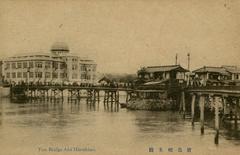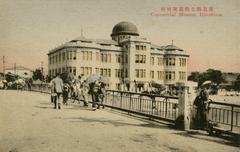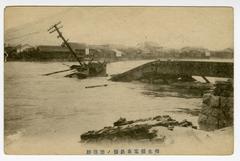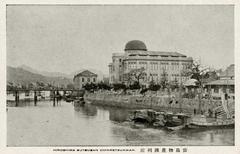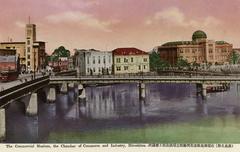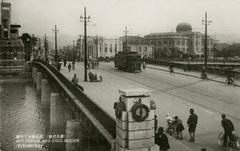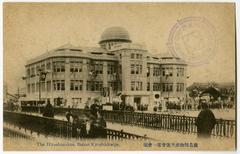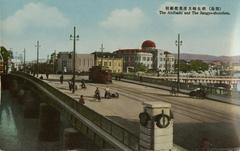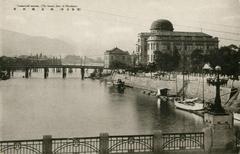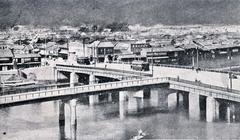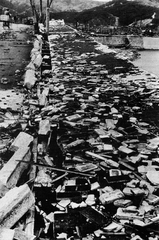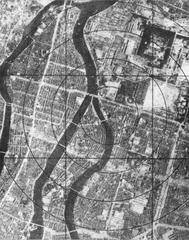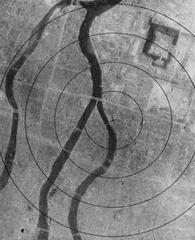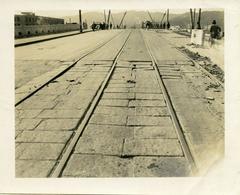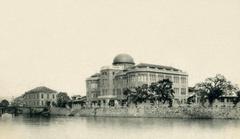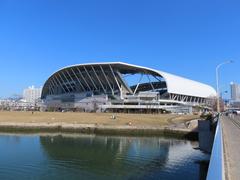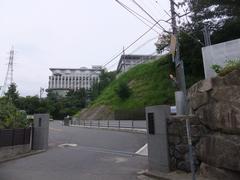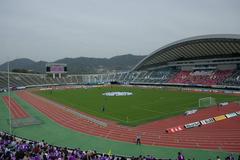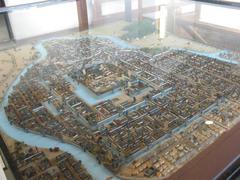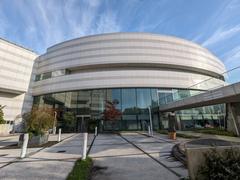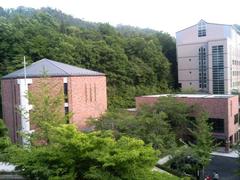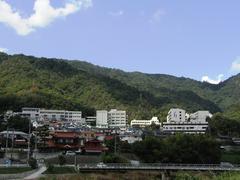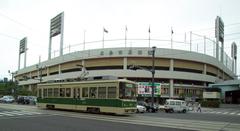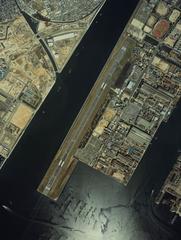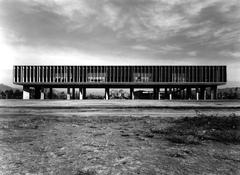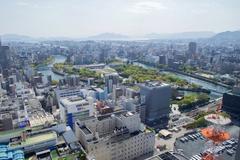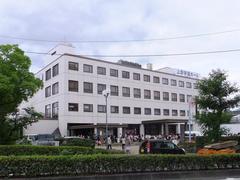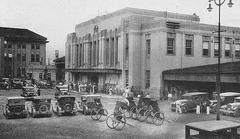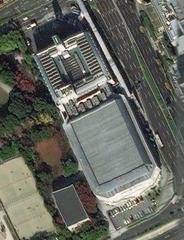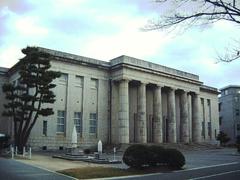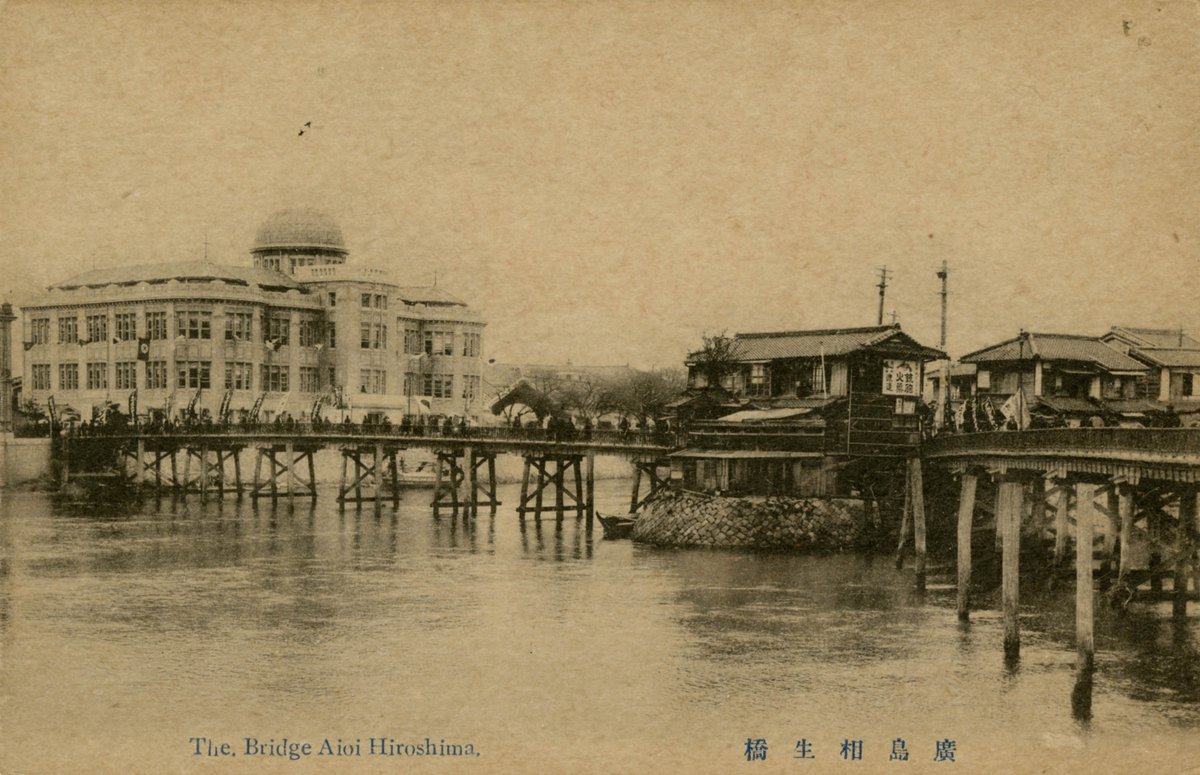
Aioi Bridge Hiroshima: Visiting Hours, Tickets, and Historical Significance Guide
Date: 15/06/2025
Introduction: The Historical and Cultural Significance of Aioi Bridge
Located in the heart of Hiroshima, Japan, Aioi Bridge (相生橋, Aioi-bashi) is a landmark renowned for its rare T-shaped structure and its pivotal role as a silent witness to the atomic bombing of Hiroshima on August 6, 1945. Originally constructed in the early 1930s, the bridge’s unique design dramatically influenced history, making it the primary aiming point for the atomic bomb due to its aerial visibility. Today, Aioi Bridge stands as a testament to the devastation of nuclear warfare and, equally, to the enduring resilience and hope of Hiroshima’s citizens.
Serving as a vital link between Hiroshima’s past and present, Aioi Bridge is integrated into the Hiroshima Peace Memorial Park, connecting visitors physically and emotionally to the city’s legacy and ongoing message of peace. This guide provides a comprehensive exploration of the bridge’s history, wartime significance, reconstruction, and cultural symbolism, alongside practical information for visitors—such as accessibility, visiting hours, and nearby attractions.
For further details and in-depth historical accounts, refer to the Hiroshima Peace Memorial Museum, National Geographic, and Peace Tourism.
Table of Contents
- Introduction: The Historical and Cultural Significance of Aioi Bridge
- Origins and Architectural Features
- Aioi Bridge during World War II
- Postwar Reconstruction and Preservation
- Symbolism and Cultural Impact
- Aioi Bridge in Modern Hiroshima
- Visiting Information: Hours, Tickets, Accessibility
- Travel Tips and Nearby Attractions
- Visuals and Media Suggestions
- Frequently Asked Questions (FAQ)
- Conclusion and Visitor Recommendations
- Sources
Origins and Architectural Features
Construction and Design
Built in 1932, Aioi Bridge was initially designed to accommodate streetcar traffic and was expanded in 1934 to achieve its rare T-shaped configuration (Hiroshima Peace Memorial Museum). This design, unique in Japan, connected three key points across the Motoyasu and Ota rivers. The original structure was 15 meters wide. After reconstruction in 1983, it now spans 123.4 meters in length and 40 meters in width, supporting streetcars, vehicles, and pedestrians.
Architectural Distinction
The bridge’s T-shape offered a practical solution for connecting vital parts of Hiroshima, and for a brief period, accompanying wooden bridges created an H-shaped urban feature (Dennis Amith, 2019).
Aioi Bridge during World War II
Wartime Target and Impact
On August 6, 1945, Aioi Bridge was selected as the primary aiming point for the atomic bomb due to its distinctive aerial shape (Hiroshima Peace Media). The bomb detonated approximately 300 meters away, but the bridge sustained significant force—estimated at seven tons per square meter. Despite losing its northern handrail to the river, the bridge did not collapse and remained in use for decades (Dennis Amith, 2019).
Postwar Reconstruction and Preservation
Reconstruction Efforts
After WWII, the damaged bridge was repaired and functioned until structural deterioration prompted a rebuild in 1983. The new design harmonizes with the Peace Memorial Park and A-Bomb Dome, utilizing granite for durability and aesthetic integration (Hiroshima Peace Memorial Museum). Original bomb-damaged pillars are preserved at the bridge’s foot, and deformed girders are displayed in the museum.
Symbolism and Cultural Impact
A Living Memorial
Aioi Bridge is more than an infrastructural crossing—it is a symbol of Hiroshima’s wartime suffering and recovery. Its proximity to the UNESCO-listed A-Bomb Dome and position within Peace Memorial Park amplify its status as a site of remembrance (Dennis Amith, 2019). The bridge’s newel post features calligraphy by Hirokichi Nadao, underscoring its national significance.
Role in Hiroshima’s Narrative
The bridge is central to Hiroshima’s peace narrative, hosting annual commemorations and serving as a gathering point for survivors and visitors. The continuing use of the bridge by locals, students, and tourists underscores the city’s resilience and the normalization of life after tragedy (National Geographic).
Aioi Bridge in Modern Hiroshima
Urban Integration
Aioi Bridge forms a vital artery in Hiroshima’s modern cityscape, linking the city center to Peace Memorial Park. The surrounding area includes the Atomic Bomb Dome, Hiroshima Peace Memorial Museum, and Hiroshima Castle, making the bridge an essential stop for visitors (Evendo).
Accessibility
The bridge is fully accessible, with wide pedestrian walkways and smooth, wheelchair-friendly surfaces. It is integrated with Hiroshima’s tram and bus systems.
Visiting Information: Hours, Tickets, Accessibility
- Visiting Hours: Open 24 hours a day, year-round. There are no gates or time restrictions (Evendo).
- Tickets/Admission: No fee or ticket is required for the bridge itself. Entry to the Hiroshima Peace Memorial Museum nearby is ticketed.
- Getting There:
- By Tram: Take Line 2 or 6 to “Genbaku Dome-mae” (Atomic Bomb Dome); walk 2–3 minutes to the bridge (flashpackingjapan.com).
- By Bus: Local buses stop at “Genbaku Dome-mae.”
- On Foot: About 25–30 minutes from Hiroshima Station.
- By Ferry: Direct ferry from Miyajima to Peace Memorial Park area (flashpackingjapan.com).
- Facilities: Rest areas, tourist information (Peace Park Resthouse), vending machines, cafés, and accessible public restrooms are available nearby.
Travel Tips and Nearby Attractions
Best Times to Visit:
Visit early in the morning for a quiet atmosphere, especially around 8:15 a.m. when the Peace Clock Tower chimes, or in the evening when the area is beautifully illuminated.
Nearby Attractions:
- Atomic Bomb Dome: UNESCO World Heritage Site and preserved ruin (visitjapan-vegetarian.com).
- Peace Memorial Park: Includes the Peace Bell and Cenotaph for Atomic Bomb Victims.
- Hiroshima Peace Memorial Museum: Provides insight into the bombing and aftermath (about 200 yen admission) (flashpackingjapan.com).
- Hiroshima Castle: A short walk from the bridge.
Etiquette:
Maintain a respectful tone and avoid disruptive behavior given the somber nature of the site. Photography is permitted, but be considerate of those reflecting or mourning.
Visuals and Media Suggestions
To enhance your visit or understanding, explore:
- Photographs and virtual tours of Aioi Bridge and its bomb-damaged remnants (Hiroshima Peace Memorial Museum).
- Maps showing the bridge’s location within Peace Memorial Park.
- Video tours and interactive presentations on major travel platforms.
Frequently Asked Questions (FAQ)
Q: Is there an admission fee to visit Aioi Bridge?
A: No, access is free and open 24/7.
Q: What are the visiting hours?
A: The bridge is accessible at all times, year-round.
Q: Is the bridge wheelchair accessible?
A: Yes, the bridge and surrounding areas are fully accessible.
Q: How do I get to Aioi Bridge?
A: By tram (Line 2 or 6), bus, on foot from Hiroshima Station, or by ferry from Miyajima.
Q: Are guided tours available?
A: Yes, guided walking tours are offered and often include the bridge, museum, and park.
Q: What else can I see nearby?
A: Atomic Bomb Dome, Peace Memorial Park, Hiroshima Peace Memorial Museum, and Hiroshima Castle.
Conclusion and Visitor Recommendations
Aioi Bridge is more than a crossing—it is a symbol of Hiroshima’s enduring spirit, the tragedy of nuclear warfare, and a call for global peace. Its accessibility, central location, and proximity to major historical sites make it a must-visit for anyone interested in history, culture, or peace studies. Enhance your visit with guided tours, virtual resources, or the Audiala app for immersive audio guides and up-to-date information.
Sources
- Hiroshima Peace Memorial Museum
- Peace Tourism: Aioi Bridge
- National Geographic: Elusive Horror of Hiroshima
- Dive Hiroshima
- Evendo - Aioi Bridge
- Dennis Amith: The One About Aioi Bridge in Hiroshima
- Japan Guide
- flashpackingjapan.com
- visitjapan-vegetarian.com
- thrillophilia.com
- Trek Zone
